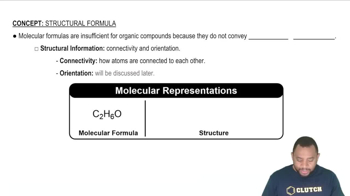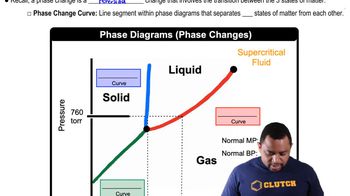CdS has a band gap of 2.4 eV. If large crystals of CdS are illuminated with ultraviolet light, they emit light equal to the band gap energy. (b) Would appropriately sized CdS quantum dots be able to emit blue light?
What evidence supports the notion that buckyballs are actual molecules and not extended materials? (a) Buckyballs are made of carbon. (b) Buckyballs have a well-defined atomic structure and molecular weight. (c) Buckyballs have a well-defined melting point. (d) Buckyballs are semiconductors. (e) More than one of the previous choices.
 Verified step by step guidance
Verified step by step guidanceKey Concepts
Molecular Structure

Molecular Weight

Phase Transition Properties

CdS has a band gap of 2.4 eV. If large crystals of CdS are illuminated with ultraviolet light, they emit light equal to the band gap energy. (c) What about red light?
Which statement correctly describes a difference between graphene and graphite? (a) Graphene is a molecule but graphite is not. (b) Graphene is a single sheet of carbon atoms and graphite contains many, and larger, sheets of carbon atoms. (c) Graphene is an insulator but graphite is a metal. (d) Graphite is pure carbon but graphene is not. (e) The carbons are sp2 hybridized in graphene but sp3 hybridized in graphite.
Selected chlorides have the following melting points: NaCl (801 °C), MgCl2 (714 °C), PCl3 (-94 °C), SCl2 (-121 °C) (a) For each compound, indicate what type its solid form is (molecular, metallic, ionic, or covalent-network).
Imagine the primitive cubic lattice. Now imagine pushing on top of it, straight down. Next, stretch another face by pulling it to the right. All angles remain 90°. What kind of primitive lattice have you made?
